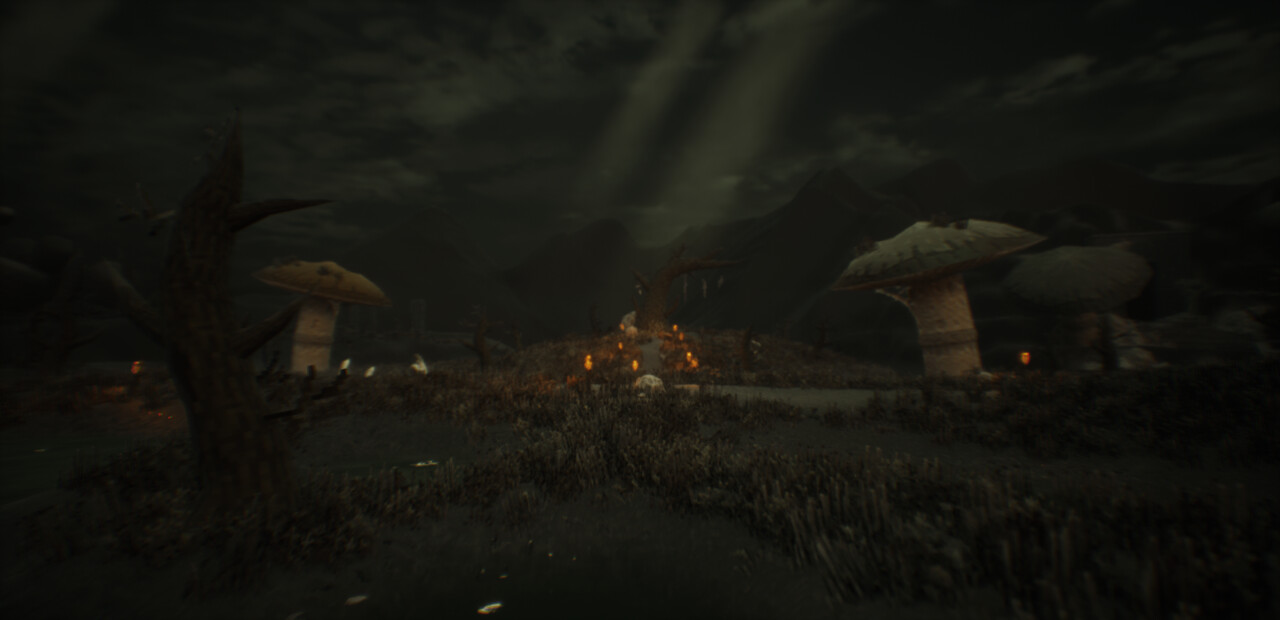This blog post serves as a mid-way postmortem, reflecting on the process of the part of Project Chronovia I made for my university capstone project. I will briefly discuss what went well for the project and what didn't work out as expected, the project's future, and my plans for moving forward.
What went well
When starting, I had considered using the Unity engine for this project as I had a bit more experience using it working in this art style and as a Unity publisher, but in the end, I decided to persist with Unreal Engine 5, and I am happy that I did. There is no way I would have been able to complete as many of the environments as I did at the level of quality I achieved if I hadn't used the Unreal Engine. The tools packed into the Unreal Engine allowed me to build a majority of the project entirely in the engine, making the entire process straightforward and pain-free on the technical side.
On the art side, I believe the project's strongest element was the environment's aesthetic and feel. As the environments were the primary focus, I put a lot of effort into making the world feel like a dark, dystopian fantasy and felt I was able to capture that feeling in the final product, especially coupled with the music.
Overall, the entire process went smoothly without any significant issues. I am extremely happy with the final outcome, which far exceeded the expectations I had when going into this project.
What didn't go well
Suppose you have followed my blogs surrounding this project. In that case, you probably know that I had a very limited amount of time to complete the project (Starting production in August and completing in October). This time constraint was probably the biggest hurdle while working on this project, and while it didn't stop me from completing the project on time, it did slightly impact the project's quality in some aspects.
The first was that I had a tight schedule when creating the 3D assets. This time limitation had an impact on the amount of assets I was able to make per area and also the detail I was able to add to each model. Because of this, I had to sacrifice quality on some of the basic models to make more time for higher detail/landmark models. In some cases, such as the Mortisoria kingdom in the background of the first area, I had to improvise and draw the castle as a sprite on a plane rather than creating a proper model to not fall behind the deadlines I had set for myself. Ultimately, this also had an impact on the environments themselves. While I was able to fill environments with objects to achieve the overall aesthetic successfully, I would have preferred to have extra time to make multiple unique and detailed objects to raise the standard of quality overall.
The project's second and most significant aspect affected by time constraints was the character animations, specifically the NPCs I wanted to populate the city with. In my original vision for the city, I wanted multiple variations of NPCs walking around to make it feel alive. However, In the end, I ended up with a handful of the same character animations walking in a single side profile walk cycle. In the end result, not having a lot of variations didn't affect the overall outcome as much as I thought it would, and ultimately fit the theme of the city being depicted as an imperial dictatorship where its citizens are not likely out walking around. Still, I would have at least liked to be able to add front-profile animations to suit the render sequence better and possibly some military-looking characters.
The Future of Chronovia
I have plans to continue the character's journey across the world, and now that I am free from the time constraints set by my university commitments, I am free to work on Project Chronovia at my own pace. I plan to continue building on the world, refining models in old areas, adding new areas, possibly even larger, more fleshed-out areas, and finishing the sequence of the character's journey to the holy land of Terre Sainte. In saying that, I will continue to post more production blogs and update my Trello as I progress through the project.
You can check out my Trello here to keep up to date with my progress. Similarly, you can follow me on Artstation to get notifications for future blog posts and other projects I may work on.
In case you missed it - Here's the final render for my capstone project
Thanks for reading! I look forward to posting more in the future!












